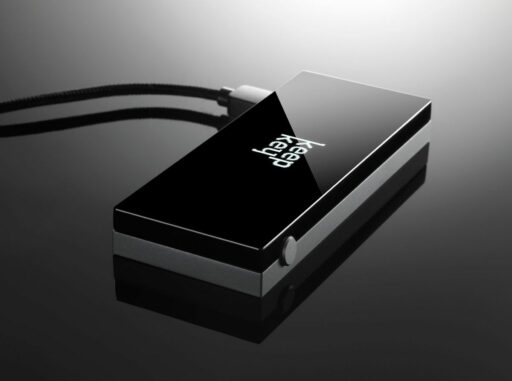In the rapidly evolving world of cryptocurrency, the role of exchanges is more critical than ever. They are the battlegrounds where digital assets are traded, and their influence on the market is undeniable. As new players emerge and established platforms evolve, understanding the landscape of the top crypto exchanges is essential for investors and traders alike. This article delves into the giants of the crypto exchange market, comparing their features, analyzing their growth, and providing insights into what makes them the preferred choice for millions around the globe.
Key Takeaways
- Binance dominates the market with unparalleled trading volume and a comprehensive range of features, making it the top choice for many investors.
- Coinbase remains a leading exchange in the US, prized for its user-friendly interface and appeal to beginners in the crypto space.
- Kraken is gaining traction with its robust security measures and advanced trading options, appealing to both seasoned traders and institutions.
- Emerging contenders like CoinDCX are shaking up the market, challenging the dominance of the top exchanges with unique offerings.
- Experts and analysts evaluate exchanges based on a variety of factors including trading volume, security, user experience, and fee structures.
Assessing the Giants: A Comparative Analysis of Top Crypto Exchanges

Binance vs. Coinbase: A Volume and Feature Showdown
In the dynamic world of cryptocurrency exchanges, Binance and Coinbase stand out as titans, each commanding significant attention for their volume and array of features. Binance reigns supreme in terms of trading volume, dwarfing its competitors with numbers that speak to its global dominance. At the time of writing, Binance boasts a 24-hour trading volume of $15,821,325,363, while Coinbase trails with $1,777,324,086.
| Exchange | 24-hour Trading Volume |
|---|---|
| Binance | $15,821,325,363 |
| Coinbase | $1,777,324,086 |
Beyond sheer volume, the two exchanges compete fiercely across various services, including staking, NFT marketplaces, user friendliness, fee structures, trading options, crypto debit cards, customer support, and security measures. Each platform has carved out its niche, with Coinbase being lauded for its user-friendly approach, appealing to newcomers in the crypto space, while Binance caters to a more diverse and global user base with its extensive features.
While volume is a clear indicator of an exchange’s reach and liquidity, the feature set is equally critical in determining its suitability for different types of investors.
The battle between Binance and Coinbase is not just about numbers; it’s a reflection of the evolving needs of modern traders who demand both robust infrastructure and intuitive interfaces. As the market matures, these platforms continue to adapt, shaping the future of digital asset trading.
Kraken’s Ascent in the Crypto Exchange Hierarchy
Kraken’s rise in the crypto exchange market is a testament to its robust feature set and commitment to security. Kraken’s strengths lie in an updated verification process and a high percentage of assets stored in cold storage, ensuring a secure trading environment for its users. The exchange has made significant strides, offering over 200 tradable coins and competitive fees, which has helped it secure a strong position in the market.
Despite the competition, Kraken has carved out a niche for itself, especially among institutional investors. The launch of Kraken Institutional demonstrates the exchange’s focus on providing comprehensive services tailored to the needs of asset managers and hedge funds. This move underscores Kraken’s ambition to expand its offerings and cater to a broader audience.
| Feature | Kraken | Binance |
|---|---|---|
| Tradable Coins | 200+ | Varies |
| Trading Fees | 0.9% – 1.5% | Varies |
| Security Measures | High | High |
| User Accessibility | 48 U.S. States | Global |
While Kraken continues to challenge the dominance of exchanges like Coinbase and Binance, it remains a preferred choice for many due to its user-friendly interface and comprehensive security measures. The exchange’s ascent is a clear indicator of its growing influence in the crypto market.
Emerging Contenders: CoinDCX and Others
While the crypto exchange market is dominated by heavyweights, emerging platforms like CoinDCX are gaining traction. CoinDCX, an Indian crypto exchange, has recently seen its valuation soar past the $2 billion mark, signaling a robust entry into the competitive landscape. This growth is indicative of the platform’s commitment to expanding its product offerings and enhancing user experience.
CoinDCX’s rise is not isolated. Other platforms such as WazirX, Unocoin, and CoinSwitch Kuber are also part of this burgeoning segment. These exchanges are carving out their own niches, often focusing on regional markets or unique features to differentiate themselves.
The success of these emerging contenders is a testament to the dynamic nature of the crypto exchange industry, where innovation and adaptability are key to capturing market share.
As investors and traders continue to diversify their portfolios, the importance of considering a range of exchanges, including these rising stars, becomes increasingly clear. Each offers a distinct blend of services, security measures, and fee structures, catering to the varied needs of the crypto community.
Key Considerations for Selecting a Crypto Exchange

Understanding the Importance of Trading Volume
When selecting a crypto exchange, one of the most critical factors to consider is the trading volume. This metric is a strong indicator of an exchange’s liquidity, which reflects the ease with which traders can execute transactions without significantly affecting the asset’s price. High trading volumes suggest a vibrant market with numerous participants, which typically results in more competitive prices and lower slippage.
Trading volume is essential because it affects the efficiency of the markets. A high volume ensures that buy and sell orders can be matched with minimal price deviation, which is crucial for traders looking to execute large orders.
Here’s a snapshot of the trading volume disparity between two leading exchanges:
| Exchange | 24-hour Trading Volume |
|---|---|
| Binance | $15,821,325,363 |
| Coinbase | $1,777,324,086 |
While Binance dominates in terms of volume, it’s important to remember that other factors such as features, fees, and security also play a significant role in choosing the right platform. The volume indicated is spread across a number of exchanges, each with their own market efficiencies for those wanting to buy and sell.
Security Measures: The Make or Break for Exchanges
In the realm of cryptocurrency trading, security is paramount. Exchanges are the custodians of users’ funds, and their ability to protect these assets is a critical factor in their success or failure. The rise in the value and popularity of cryptocurrencies has made them a prime target for hackers, with major platforms like Binance and KuCoin experiencing significant breaches, leading to substantial financial losses.
To mitigate these risks, exchanges have implemented robust security protocols. Most now store the majority of customer assets in cold storage, inaccessible to online threats, and have adopted comprehensive insurance policies to safeguard against potential hacking incidents.
However, the centralization of exchanges introduces additional vulnerabilities. Centralized exchanges (CEXs) hold the crypto assets traded on their platforms, which can be a double-edged sword. While it facilitates trading, it also increases the risk of asset theft. In response, many have bolstered their defenses, but the threat remains a concern for traders and the exchanges themselves.
The table below outlines key security features that are commonly evaluated when choosing a crypto exchange:
| Feature | Description |
|---|---|
| Cold Storage | Percentage of assets stored offline |
| Insurance | Coverage against theft and hacking |
| User Verification | KYC procedures to prevent fraud |
| Security Protocols | Use of multi-factor authentication, encryption, etc. |
Selecting the right exchange is not just about comparing fees or trading volumes; it’s about ensuring that your investments are secure. As the industry evolves, so too must the security measures employed by these platforms to maintain trust and operational integrity.
User Experience: Navigating Through Complexity
The user experience (UX) of a crypto exchange can be the deciding factor for many users, especially those who are new to the world of cryptocurrency trading. A well-designed interface can significantly reduce the learning curve and help prevent costly mistakes that stem from confusion or missteps during trading.
For instance, Binance, while praised for its extensive features, often receives feedback about its complex interface. Users report feeling overwhelmed by the multitude of options and the difficulty in performing simple tasks like generating account statements or finding transaction history.
In contrast, Coinbase is frequently lauded for its clean and straightforward interface. The exchange’s design philosophy seems to cater to both seasoned traders and newcomers, striking a balance between functionality and simplicity.
The key to a successful exchange platform is not just the number of features it offers, but how accessible and intuitive these features are for the average user.
Here’s a quick comparison of user feedback on interface complexity:
- Binance: Overwhelming number of features; navigation can be confusing.
- Coinbase: Cleaner, simpler interface; easier to navigate and understand.
Ultimately, exchanges must evolve their UX to accommodate a growing and diverse user base, ensuring that both novices and professionals can navigate the platform with ease.
Fee Structures: Balancing Cost with Service
When diving into the world of cryptocurrency trading, understanding the fee structures of exchanges is crucial. Fees can significantly impact your trading profitability, especially when engaging in frequent transactions. Exchanges like Coinbase and Binance employ a tiered fee system based on your 30-day trading volume, incentivizing higher volume trading with lower fees.
For instance, on Coinbase, traders with a volume of up to $100k are charged a taker fee of 0.25% and a maker fee of 0.15%. These fees scale down with increased volume, dropping to as low as 0.10% and 0.00% respectively for volumes exceeding $50m. Additionally, Coinbase charges a 2.49% fee for certain card and bank transactions, though this can be reduced to 0% with Coinbase Pro.
While considering fee structures, it’s essential to look beyond just maker and taker fees. Overall costs, including any discounts for trading volume or holding an exchange’s native cryptocurrency, should be factored into your decision.
Remember that some exchanges also charge withdrawal fees and spreads, which can add up over time. It’s not just about the percentage fees; the actual cost of trading can be influenced by these additional charges. Always read the fine print and understand the full extent of fees before committing to an exchange.
The Evolution of Cryptocurrency Trading Platforms

The Role of Exchanges in the Digital Currency Landscape
Cryptocurrency exchanges serve as the foundational pillars in the digital currency landscape, offering a marketplace for users to buy, sell, and trade a variety of digital assets. They are akin to traditional brokerage platforms but are specialized for the dynamic and decentralized nature of cryptocurrencies.
- Centralized exchanges (CEX) provide a managed environment with added security features and user support.
- Decentralized exchanges (DEX) allow for direct peer-to-peer transactions without the need for an intermediary.
The choice between a CEX and a DEX can significantly impact a user’s trading experience, with each offering distinct advantages and challenges.
As the gateways to digital assets, exchanges are often the first point of contact for new investors, making their role in user education and security paramount. The continuous innovation and adaptation of these platforms are essential to meet the evolving needs of traders and to navigate the ever-changing crypto landscape.
Innovations in Trading: Meeting the Needs of Modern Investors
The landscape of cryptocurrency trading is continuously evolving to meet the demands of modern investors. The platform has been specifically designed to cater to the evolving needs of seasoned traders, offering a multitude of currency trading options. This evolution is marked by several key innovations that are shaping the trajectory of digital currencies.
- Basic Trading Features
- Number of cryptocurrencies available
- Number of fiat currencies accepted
- Overall liquidity
- Trading fees
- Advanced Trading Features
- Availability of advanced order types
- Volume discounts for frequent trading
- Margin Trading
- Assessment of margin trading rates
The exchange landscape is not just about the real-time price of Bitcoin or the security settings of a crypto account; it’s about the comprehensive experience that caters to both new entrants and experienced traders.
As the market grows, so does the complexity of the services offered. Exchanges are now more than just a place to buy and sell digital assets; they are platforms that offer a range of services from basic trading to advanced investment strategies.
The Impact of User-Friendly Interfaces on Adoption
The adoption of cryptocurrency exchanges is significantly influenced by the user experience they offer. A clear and intuitive interface can be the deciding factor for new users when choosing a platform. User-friendly designs not only attract first-time investors but also retain seasoned traders by providing a streamlined experience.
The complexity of a platform should not deter users but empower them with the right tools at the right time.
For instance, exchanges like Coinbase have been praised for their clean and simple interfaces, which contrast with the often overwhelming options found on platforms like Binance. While a wealth of features can be advantageous, it’s crucial that they don’t clutter the user’s journey.
- Ease of Use: New users favor platforms that are easy to navigate.
- Feature Accessibility: Advanced features should be accessible but not intrusive.
- Design Consistency: Sudden changes in the interface can lead to costly errors.
Ultimately, exchanges that prioritize user experience are likely to see higher adoption rates, as they cater to the needs of a diverse user base, from beginners to professional traders.
Expert Insights: Analysts’ Takes on the Best Crypto Exchanges

Ranking Methodology: How Experts Evaluate Exchanges
Experts employ a multifaceted approach to evaluate and rank crypto exchanges, ensuring that traders and investors have access to reliable and comprehensive comparisons. The evaluation of cryptocurrency exchanges is an MCDM problem based on many conflicting criteria. This process typically involves the following steps:
- Collecting data based on user reviews and online research.
- Testing the exchanges to assess features and performance.
- Evaluating key factors such as security, fees, and user experience.
- Calculating weighted values for each factor to determine overall rankings.
The methodology is designed to be transparent and replicable, providing a clear framework for comparison.
While the best-worst method (BWM) offers an easy-to-understand framework, experts also consider a range of variables that benchmark features and options across exchanges. These include, but are not limited to, trading volume, security measures, and customer support.
Top Picks for March 2024: Where the Experts Are Leaning
As the crypto market continues to evolve, experts have weighed in with their top picks for exchanges in March 2024. Binance remains a leader in the space, maintaining high trading volumes and a robust feature set despite facing regulatory challenges.
Kraken, with its enhanced security measures and user-friendly interface, has solidified its position as a top contender. Coinbase, known for its ease of use and strong regulatory compliance, continues to be a preferred choice for many, especially in the United States.
Emerging exchanges like CoinDCX have also made the list, offering unique features and competitive fee structures that appeal to a global audience. Here’s a snapshot of the expert rankings:
| Exchange | Volume (USD) | Key Features | User Rating |
|---|---|---|---|
| Binance | $2B+ | Comprehensive trading options, global reach | 4.5 |
| Kraken | $750M+ | High security, advanced trading tools | 4.3 |
| Coinbase | $500M+ | User-friendly, strong regulatory standing | 4.2 |
| CoinDCX | $250M+ | Innovative offerings, competitive fees | 4.0 |
While these rankings reflect current preferences, investors are encouraged to conduct their own research, considering factors such as security, fees, and personal investment goals before making a decision.
Beginner-Friendly Platforms: A Guide for New Traders
When venturing into the world of cryptocurrency trading, the choice of platform can be overwhelming for newcomers. Selecting a beginner-friendly exchange is crucial to ensure a smooth initiation into crypto trading. Here are some key features to look for:
- Educational Resources: A platform that offers comprehensive learning materials can be invaluable for understanding the market.
- Simplicity of Use: Exchanges like Coinbase are renowned for their straightforward interfaces, making them ideal for beginners.
- Accessibility: Verify that the exchange you choose is legally available in your region to avoid any compliance issues.
Remember, a user-friendly design is not just about aesthetics; it’s about making the trading process as intuitive as possible.
While platforms such as Binance offer advanced features, they may present a steeper learning curve. It’s important to balance the need for simplicity with the desire to grow into more complex trading activities. As you gain experience, you can explore exchanges with tiered structures that cater to both novice and experienced traders.
The Future of Crypto Exchanges: Trends and Predictions

Adapting to Regulatory Changes: A Forward-Looking Approach
In the ever-evolving world of cryptocurrency, regulatory compliance is a critical factor that can determine the longevity and success of a crypto exchange. As regulations tighten globally, exchanges must be agile, adapting their operations to meet new legal standards without compromising on service quality.
- Regulatory Environment: It’s essential for users to understand the regulatory landscape in their jurisdiction, as it can significantly impact the legality and security of their investments.
- Due Diligence: Investors should conduct thorough due diligence, which includes researching the exchange’s history and reviewing its offering documents.
Exchanges that prioritize regulatory compliance and user protection are more likely to gain trust and retain users in the long term.
- Exit Strategy: A clear exit strategy should be part of every investor’s plan, helping to avoid impulsive decisions and align with personal investment goals.
Technological Advancements: Preparing for the Next Wave
As the crypto market evolves, technological advancements are pivotal in shaping the future of exchanges. Blockchain innovations are at the forefront, with trends like decentralized finance (DeFi) and non-fungible tokens (NFTs) already influencing the market dynamics.
The integration of artificial intelligence (AI) and machine learning (ML) into trading platforms is enhancing predictive analytics and automation, offering traders sophisticated tools to navigate the volatile crypto landscape. This is not just about the next cryptocurrency to explode, but about creating a resilient infrastructure that can support the growth and complexity of digital assets.
The focus is now on developing technologies that ensure scalability, security, and user accessibility, preparing exchanges for an influx of mainstream investors.
With regulatory landscapes changing, exchanges must also be agile in adapting to new laws and standards. The anticipation of a Bitcoin ETF or similar products could further catalyze the market, making it essential for platforms to be ready for such breakthroughs.
The Role of Community and Reputation in Long-Term Success
In the dynamic world of cryptocurrency exchanges, community engagement and reputation are pivotal for long-term success. A strong community not only fosters trust but also acts as a catalyst for growth, providing feedback and advocating for the platform. Exchanges like Bittrex and Binance have leveraged their communities effectively, often leading to a loyal user base.
The strength of a crypto exchange’s community can be a significant indicator of its resilience and potential for future growth.
Reputation, built on factors such as regulatory compliance and innovation, is equally crucial. It’s not just about having a robust platform; it’s about how users perceive and talk about it. A positive reputation can enhance user experience and attract new users, while a negative one can deter potential customers and even lead to a platform’s decline.
Understanding the interplay between community and reputation can guide exchanges in maintaining a competitive edge. As the market evolves, those who listen to their users and adapt to their needs, while maintaining a strong ethical stance, are more likely to thrive.
Conclusion
In the dynamic world of cryptocurrency trading, exchanges like Binance, Coinbase, and Kraken have established themselves as leading platforms, each offering unique features and services tailored to different types of traders. Binance stands out with its unmatched trading volume and extensive feature set, catering to both retail and institutional investors. Coinbase, with its user-friendly interface, appeals to beginners, while Kraken’s robust security and advanced options attract experienced traders. As the market evolves, the choice of exchange should be guided by individual needs, considering factors such as features, fees, asset support, and security. Ultimately, the best exchange is one that aligns with a user’s trading goals and provides a reliable and efficient trading experience.
Frequently Asked Questions
Which crypto exchange has the largest trading volume?
Binance is the largest cryptocurrency exchange in terms of trading volume, with figures reaching $15,821,325,363 as of the latest reports.
What should I consider when choosing a crypto exchange?
When choosing a crypto exchange, consider factors such as trading volume, features, fees, asset support, security measures, and the exchange’s reputation.
Is Kraken a good crypto exchange for beginners?
Kraken is known for its robust security and a wide range of cryptocurrencies. While it caters to experienced traders, it may also be suitable for beginners due to its user-friendly interface.
How do experts rank and evaluate crypto exchanges?
Experts evaluate crypto exchanges based on a combination of factors including trading volume, security, user experience, fee structures, and additional features. The sum of weighted values across key factors determines each exchange’s rank.
What technological advancements are expected in crypto exchanges?
Crypto exchanges are anticipated to undergo technological advancements that will improve security, enhance trading features, and provide more user-friendly interfaces to meet the evolving needs of modern investors.
Are Coinbase and Binance suitable for retail investors?
Yes, both Coinbase and Binance are suitable for retail investors, offering deep liquidity and a large trading volume to accommodate various trading strategies and sizes.





